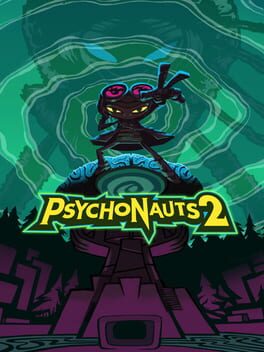Pyschonauts was a very charitable and warm game in his treatment of mental health. Far from drawing a world divided into healthy and sick, sane and crazy, his characters were built around psychiatric diagnoses, but they were presented as people with problems and fears who needed help to overcome them; suicidal tendencies, lewd behavior, amnesia, verbal incontinence ... or even aquaphobia, which is also presented as an excuse for the inability to swim in-game. an extensive field of traits and behaviors that were treated with humor, but at the same time with more respect than what real psychiatry would treat these symptoms, since it depends on the situation, they would be classified as "pathological", but mental illness is constructed for reasons beyond us, and can be deconstructed.
Psychonauts 2 takes the ending of the first game after Raz himself resolved his own traumas and learning to offer real help to people. It is sad to see that this sequel is a step back in the interactive, because navigating minds is an even more automated process and it formally feels conservative. the peculiarities outside the playable nucleus that appeared in the first psychonauts such as the strategy game against "napoleon", or the adventure game to solve the mystery of the milkman gave each mind a playable and thematic personality (level), and here they are barely present since most worlds are resolved through a mental power as a key to advance, a step back if you ask me.
However, the environmental narrative endows the minds-worlds that we visit with epic and intimacy in equal measure; an architecturally giant and twisted post office, the misivas are actually love letters and newspaper clippings recounting the fall of a country is the scene that personifies the loss of the war, and at the center of it all, a brain with a splinter stuck in, a piece of mirror in which Ford Cruller can no longer be seen
_____________________________________________________
Level design as a representation of the mind, architecture as a personification of desires, traumas and regrets
For me, the most special thing about Psychonauts was its excellence in using social conventions and applying them to its mechanics to form platformer game design elements, conventional, formally contemporary (classic these days), safe, but unexpectedly readable and expressive outside of how video games often use these social conventions.
In gaming, Mario, a short plumber who skilfully performs stunts on abstract architectures, or Sly Cooper, an anthropomorphic thief raccoon who can't swim (what the fridge !?) are perfectly valid narrative constructs, but outside the validation of his own environment and the bizarre internal logic of their platform worlds, neither makes much sense While most platformers from the early 2000s fought in this wave called "mascot platformers" re-adapting collect-a-thon structures, psychonauts chose to build a more cohesive diegesis, with more human and narrative-driven concerns.
The only thing that prevents me from recognizing Psychonauts 2 as a masterpiece, is its playable conservatism, justified, yes, but excessive
Psychonauts 2 takes the ending of the first game after Raz himself resolved his own traumas and learning to offer real help to people. It is sad to see that this sequel is a step back in the interactive, because navigating minds is an even more automated process and it formally feels conservative. the peculiarities outside the playable nucleus that appeared in the first psychonauts such as the strategy game against "napoleon", or the adventure game to solve the mystery of the milkman gave each mind a playable and thematic personality (level), and here they are barely present since most worlds are resolved through a mental power as a key to advance, a step back if you ask me.
However, the environmental narrative endows the minds-worlds that we visit with epic and intimacy in equal measure; an architecturally giant and twisted post office, the misivas are actually love letters and newspaper clippings recounting the fall of a country is the scene that personifies the loss of the war, and at the center of it all, a brain with a splinter stuck in, a piece of mirror in which Ford Cruller can no longer be seen
_____________________________________________________
Level design as a representation of the mind, architecture as a personification of desires, traumas and regrets
For me, the most special thing about Psychonauts was its excellence in using social conventions and applying them to its mechanics to form platformer game design elements, conventional, formally contemporary (classic these days), safe, but unexpectedly readable and expressive outside of how video games often use these social conventions.
In gaming, Mario, a short plumber who skilfully performs stunts on abstract architectures, or Sly Cooper, an anthropomorphic thief raccoon who can't swim (what the fridge !?) are perfectly valid narrative constructs, but outside the validation of his own environment and the bizarre internal logic of their platform worlds, neither makes much sense While most platformers from the early 2000s fought in this wave called "mascot platformers" re-adapting collect-a-thon structures, psychonauts chose to build a more cohesive diegesis, with more human and narrative-driven concerns.
The only thing that prevents me from recognizing Psychonauts 2 as a masterpiece, is its playable conservatism, justified, yes, but excessive
